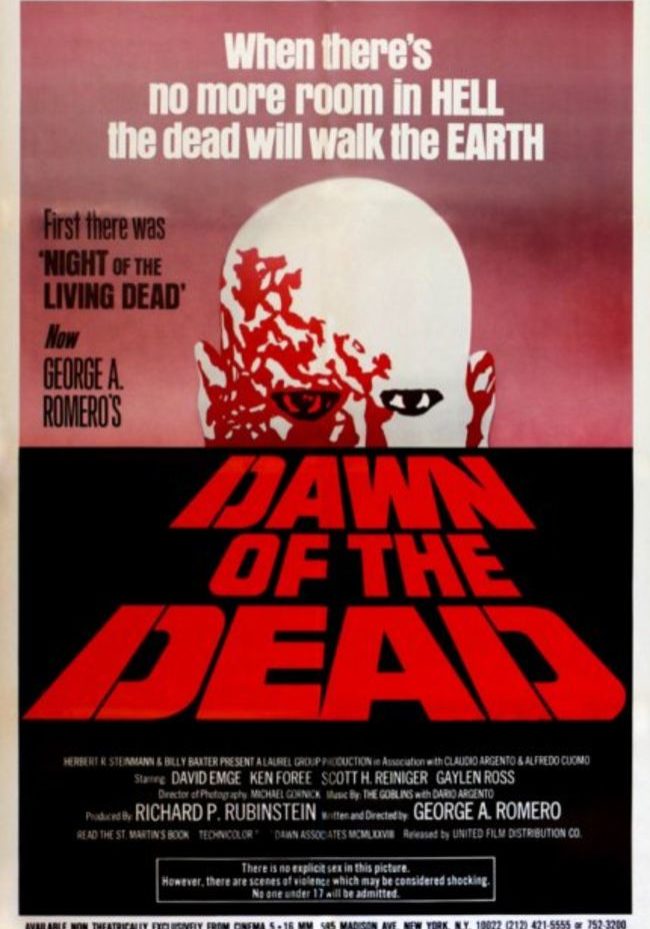When Hell is Full, the Dead Walk the Earth
George Romero’s “Dawn of the Dead,” released in 1978, remains a cornerstone of the horror genre and a seminal work in zombie cinema. Serving as a follow-up to Romero’s groundbreaking 1968 film “Night of the Living Dead,” this opus drops audiences into a world succumbing to a relentless undead onslaught. Unfolding through the desperate eyes of four survivors who seek refuge in a shopping mall – the new American cathedral of consumerism – the film draws a biting, satiric line through the onslaught of the flesh-eating masses.
Shades of Terror: Crafting the Film’s Menacing Mood
In “Dawn of the Dead,” atmosphere is key. Romero masterfully leverages suspense and an impending sense of doom that permeate every frame. The horror is not just in the gore and the undead, but in the claustrophobic and increasingly fragile sanctuary that the characters cling to. The director amplifies fear not just through shocking visuals but also through the palpable tension among the survivors, the stress of dwindling supplies, and the soul-crushing realization that civilization is crumbling around them.
The intimately framed cinematography contributes to the film’s intense atmosphere. Romero opts for mostly tight shots, creating a sense of confinement that mirrors the emotional states of the characters. Lighting is unflinchingly raw, making the bloodstained moments contrast starkly with scenes of eerie, fluorescent-lit normalcy within the mall. Special effects are visceral, with Tom Savini’s makeup artistry elevating the gore to an art form. The visual storytelling remains fresh, underscored by iconic shots that continue to influence horror productions.
Echoes of the Apocalypse: Soundtrack and Performance
Sound is a character in its own right in “Dawn of the Dead.” The soundtrack, featuring layers of unsettling synthesizer melodies, punctuates the action and underscores the bleakness of this new world. Meanwhile, the occasional absence of music, replaced by the guttural moans of the dead and the unyielding silence of a society gone quiet, emphasizes the isolation felt by the characters.
The performances are another layer of the film’s foundation. The characters are believable, showcasing a wide spectrum of human emotions and reactions. Each actor brings sincerity to their role, allowing the audience to form attachments and truly care about their fates. This human element strengthens the horror of the film, as viewers realize that, in many ways, the living can be as horrifying as the undead.
Dissecting the Horror: Tropes and Themes
“Dawn of the Dead” skilfully intertwines various horror elements, including psychological tension and violent body horror. Romero skews traditional horror tropes by injecting social commentary on consumerism and the breakdown of society into his undead narrative. The film explores the depths of human desperation and degradation more than any supernatural aspect.
The shock factor is woven seamlessly through the narrative; gore is plenty but not gratuitous, playing a role in both repelling and compelling viewers. The movie challenges the audience’s sense of comfort, offering a lens to examine the extreme multitude of human behavior under apocalyptic stress. The subtle dread of what’s to come can be more unnerving than the zombies shambling through the halls of the mall.
As a fusion of gore and greater implications, “Dawn of the Dead” is horrifying, contemplative, and, in some dark way, humorous. The film stands tall as both a pillar of the horror genre and a profound narrative on society.
The Verdict: Reflecting on Romero’s Masterpiece
With “Dawn of the Dead,” George Romero didn’t just make a horror movie; he created a mirror to show us the monstrosity within our civilization. Frightening and thought-provoking, the film transcends its genre to become a cultural critique. It is not merely a movie to watch, but experience and digest.
Horror enthusiasts, film scholars, and those who appreciate layered storytelling will likely enjoy this enduring classic. Newcomers to the genre can witness the blueprint that shaped countless zombie narratives. And while there are elements that distinctly root it in the late ’70s, its themes are timeless.
Packed with blood-curdling scenes and profound subtext, Romero’s “Dawn of the Dead” deserves its reputation. It offers a complex viewing for a wide array of audiences but be warned; the graphic content and intense images of undead horror are not for the faint of heart. Overall, this film is a triumph of horror cinema – disturbingly relevant and compelling in its message, a must-watch for those who dare to peer into the abyss of our society’s darkest reflections.




